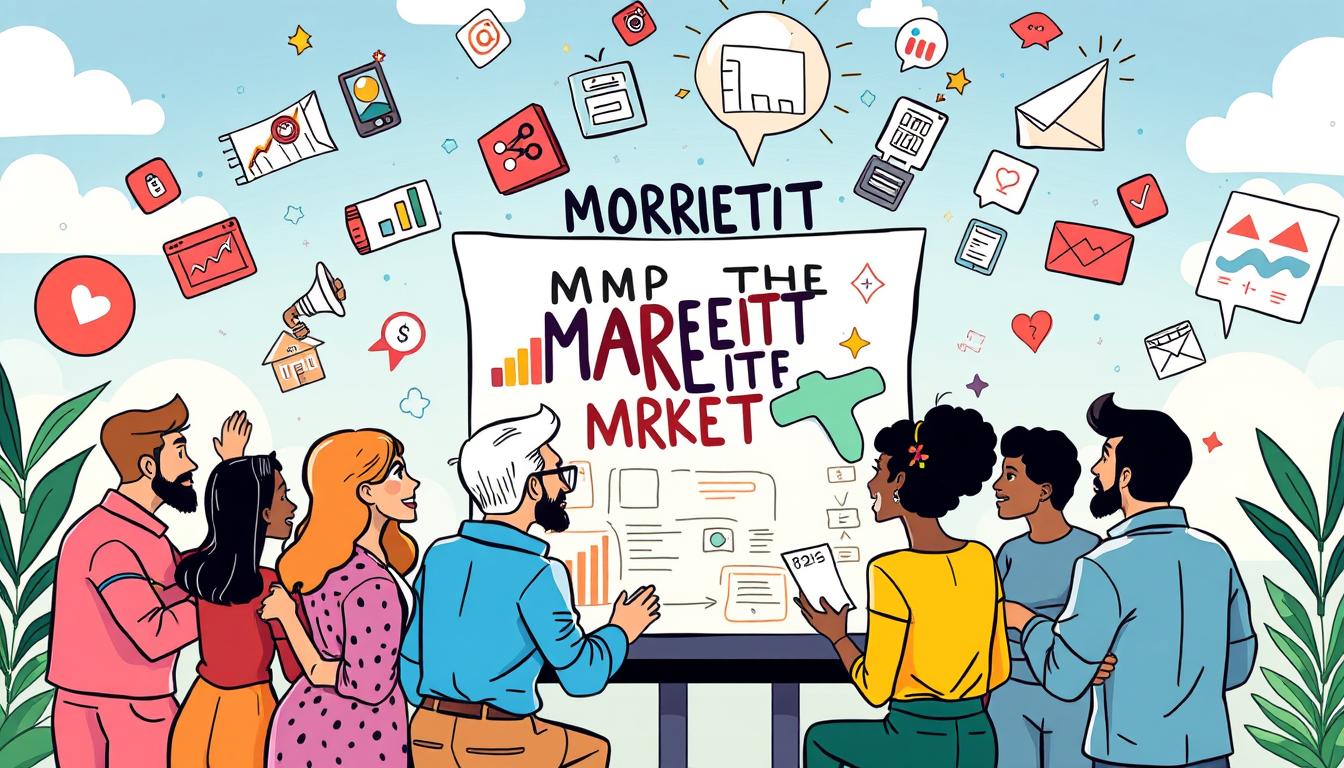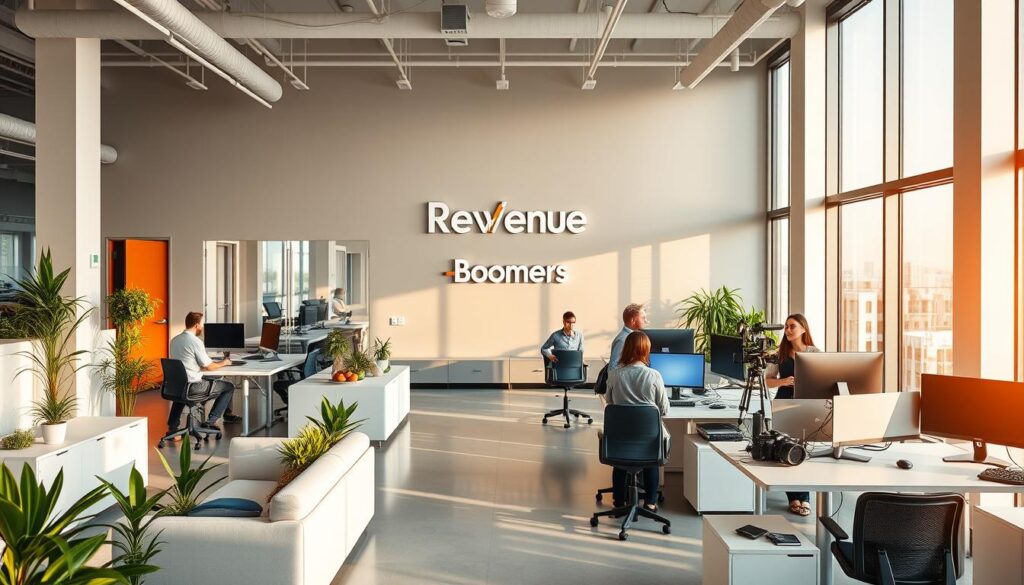Did you know there are over 1.8 million nonprofits in the United States? With so many, effective marketing is essential, not just a luxury. Nonprofits need smart strategies to reach more people, engage donors, and make a lasting impact. This guide will show you the best ways to share your mission and passion.
It covers using digital marketing for nonprofits and other methods like email and social media. You’ll learn how to create great content to boost your online presence. Plus, you’ll find out how to use Google’s free ad space worth $10,000 per month for nonprofits. You’ll get practical tips and advice for overcoming nonprofit challenges.
Key Takeaways
- Over 1.8 million nonprofits are competing for attention in the U.S. market.
- Effective marketing can directly increase fundraising revenue.
- Marketing helps raise awareness of your cause and attracts new supporters.
- A strong marketing plan starts with a core message reflective of your mission.
- High-quality content creation can lead to significant increases in organic search traffic.
- Utilizing multiple channels enhances donor engagement and outreach efforts.
- Data analysis is crucial in measuring the success of your marketing strategies.
Understanding the Importance of Marketing for Nonprofits
Marketing is key for nonprofits. It helps spread the word about their missions and builds relationships with supporters. Knowing how to market well is vital for nonprofits to stand out. Using effective marketing strategies for nonprofits can boost visibility, community involvement, and funding chances.
Why Marketing Matters for Nonprofits
Marketing is crucial for nonprofits. It makes their mission known to more people and sparks empathy. The 2021 HubSpot State of Marketing Report shows 82% of marketers use content marketing to increase visibility and engagement. For nonprofits, this is essential to connect deeply with supporters.
The Impact of Effective Marketing on Funding
Marketing is vital for nonprofits to get more funding. When they share their mission and successes well, they draw more donations. A Content Marketing Institute survey found 86% of nonprofit marketers believe content marketing boosts awareness. Using infographics and other content marketing can also make their message stronger, attracting more support.
Common Misconceptions About Nonprofit Marketing
Many think nonprofit marketing is only about raising money. But it’s also about building a brand and finding volunteers. This narrow view misses the chance to engage supporters on many levels, fostering loyalty. By using a wide range of marketing strategies, nonprofits can build stronger community ties, leading to better volunteer recruitment and retention.
For more on how to boost funding and awareness, nonprofits can check out nonprofit marketing strategies. Using social media is also key, as nearly four billion people use it worldwide, as Hootsuite points out. By debunking myths and using marketing wisely, nonprofits can make a lasting difference.
| Strategy | Benefit | Statistic |
|---|---|---|
| Content Marketing | Increases brand visibility and engagement | Costs 62% less than traditional marketing |
| Email Marketing | High ROI potential | Offers a ROI of 4400% |
| Social Media Engagement | Connects with a vast audience | Four billion users worldwide |
| Blogging | Drives website traffic | Receives 55% more traffic |
Defining Your Mission and Goals
A strong marketing plan starts with a clear mission and goals. A good mission statement for nonprofits is the base of all marketing. It shows the organization’s purpose and motivates people to get involved.
A mission statement should be short, clear, and touch the heart. It usually has 15 to 20 words. This makes it easy to remember and feel connected to.
Crafting a Compelling Mission Statement
The best mission statements are short, active, and easy to understand. It’s good to get everyone involved in making it. This way, it truly reflects the organization’s values.
Tools like WildApricot can help. They offer templates to help you create a strong mission statement. A good one has 2-5 key parts like Action and Beneficiaries.
Setting Achievable Marketing Goals
Setting marketing goals for nonprofits is key. Goals should be clear, measurable, and achievable. This makes sure you’re making progress.
Using the SMART criteria helps. It makes goals specific, measurable, attainable, relevant, and timely. This keeps you focused and helps improve your marketing.
Aligning Goals with Community Needs
Marketing goals should match what the community needs. This way, your efforts have a bigger impact. It’s important to listen to what people want.
By doing this, you create initiatives that really connect with your audience. Getting feedback from the community helps make your goals better. This ensures your marketing meets people’s needs and builds strong support.

Identifying Your Target Audience
Finding your target audience is key to good nonprofit marketing. You need to understand who they are, segment them, and use tools for feedback. This focused approach boosts your outreach.
Understanding Donor Personas
Creating donor personas helps tailor your messages. These are typical audience members, based on data about who they are and what they like. For example, a kids’ nonprofit might focus on grandparents who care about education.
Segmenting Your Audience for Impact
Segmenting your audience helps you make targeted strategies. Say you want to get local teachers to volunteer and parents to donate. This way, you can reach different groups effectively. Regular data checks help refine these segments.
Utilizing Surveys and Feedback
Using feedback is crucial for understanding your audience. Surveys and focus groups offer deep insights into what donors want. This helps you adjust your strategies, leading to more donations. Personalized outreach builds stronger connections and increases support.
Building a Strong Brand Identity
A strong nonprofit brand identity is key for reaching out and engaging with people. It makes your organization stand out in a busy market. It clearly shows your mission and values. Important parts include a unified logo, a chosen color scheme, and a brand voice that speaks to your supporters.
Elements of a Successful Nonprofit Brand
Creating a successful nonprofit brand is more than just looks. Things like logos, taglines, and fonts are crucial for being remembered. A clear nonprofit brand identity builds trust and emotional connections. This can really help with fundraising.
Studies show that sticking to brand guidelines can boost revenue by 23%. This shows how important a solid foundation is.
Creating a Consistent Brand Voice
A consistent brand voice is essential for building strong relationships. Your messages should match your mission and values. This makes your organization seem real and engaging.
Understanding your audience helps you share stories that really connect. This builds loyalty and keeps people supporting you.
Designing Effective Marketing Materials
Good marketing materials are crucial for showing what your organization does. They should look great and make people feel confident about giving. Things like brochures and digital content should show off your brand.
For more tips on improving your nonprofit’s brand, check out effective marketing strategies for nonprofits.
| Brand Element | Importance |
|---|---|
| Logo | Provides instant recognition and visual association |
| Tagline | Summarizes mission and encourages interest |
| Color Scheme | Evokes emotions and represents the organization’s personality |
| Font Style | Enhances readability and reflects brand character |
Crafting Compelling Messages
Effective messaging is key for nonprofit success. Clear and compelling stories can boost impact and build supporter connections. Nonprofit storytelling techniques create emotionally powerful stories that show the mission and build empathy.
Storytelling Techniques for Nonprofits
Storytelling is crucial for outreach campaigns. Sharing real stories of people or communities helps evoke emotions. This can inspire potential supporters to act.
Focus on the struggles and victories. Use visuals, testimonials, and statistics to show how donations help. This makes the message impactful and shows the value of support.
Highlighting Impact in Your Messaging
Donors want to see results. Show how donations make a difference, like “a $25 contribution provides 50 bags of pasta for those in need.” Clear examples build trust and motivation.
Highlighting these statistics grabs attention. It helps increase support and community engagement. This makes content more engaging for nonprofits.
Tips for Writing Engaging Content
Clarity is key in messaging. Use simple language and structure for better understanding. Personalize content based on donor interests and demographics.
Include strong calls to action, like volunteering or donating. Regularly check email and social media performance to improve outreach. Nonprofits can find more tips in this comprehensive guide on nonprofit marketing.

| Impact of Donation ($) | Result |
|---|---|
| 25 | 50 bags of pasta |
| 100 | A week of meals for a family |
| 50 | 75 hygiene kits |
| 200 | A month of school supplies for 10 children |
Utilizing Social Media for Outreach
Social media is a key tool for nonprofits to reach out and engage people. It helps them get noticed and raise funds. Choosing the right platforms is important because it affects how well nonprofits connect with their supporters.
Each platform has its own audience and way of sharing content. This can change how well a nonprofit does in its outreach efforts.
Choosing the Right Platforms
Nonprofits need to think about who they want to reach and how they like to get information. Here are some popular platforms:
- Facebook: With about 3 billion users, it’s great for sharing events, fundraising, and stories.
- Instagram: It’s all about visuals, letting nonprofits tell their story through photos and videos.
- Twitter: It’s perfect for quick updates and discussions, thanks to its character limit.
- LinkedIn: It’s for professionals, helping nonprofits share knowledge and be seen as leaders.
- TikTok: It’s for a younger crowd, using short videos to entertain and raise funds.
Content Strategies for Social Media
Creating engaging content is key to keeping people interested. Here are some tips:
- Storytelling: Share success stories and testimonials to connect with your audience.
- Visual Content: Use images and videos to show the impact of your work.
- Interactive Posts: Try polls, Q&As, and live sessions to get people involved.
- Event Promotion: Share about upcoming events to get people to participate.
- Regular Updates: Keep posting to keep your audience informed and interested.
Engaging Your Audience Online
Engagement is crucial in social media marketing for nonprofits. Responding to comments and messages builds a community. Also, tracking likes, shares, and follower growth helps see what works.
By analyzing your best content, you can do even better next time. Consistent engagement builds stronger relationships with supporters. This can lead to more loyal donors and volunteers.

| Platform | Users (Billions) | Ideal Content Type | Engagement Opportunities |
|---|---|---|---|
| 3 | Event pages, Stories, Fundraising | Comments, Shares, Fundraising events | |
| 1.5 | Images, Videos, Reels | Likes, Comments, Influencer collaborations | |
| 0.4 | Short updates, Hashtags | Retweets, Replies, Hashtag campaigns | |
| 0.8 | Educational content, Articles | Shares, Professional Networking | |
| TikTok | 1 | Short videos | Likes, Comments, Donation Stickers |
Incorporating Email Marketing Strategies
Email marketing is a key tool for nonprofits to connect with supporters and raise funds. It’s all about building email lists well, making newsletters interesting, and checking how well campaigns do. These steps help nonprofits reach out better to their audience.
Building an Effective Email List
Starting with a strong email list is crucial for nonprofits. You can attract subscribers by offering special content or downloads. Personal touches, like using the recipient’s name, make emails more engaging.
It’s also important to sort your list based on who people are and what they like. This way, you can send messages that really speak to them.
Crafting Engaging Newsletters
Newsletters are a great way to share updates, thank donors, and talk about upcoming events. To make your newsletter strategies for nonprofits work, tailor your content to what your audience cares about. Use pictures and stories to make your newsletters stand out.
Since personalized emails can lead to more sales, make sure to address your messages to each person. This can make a big difference in how well your newsletters do.
Measuring Email Campaign Success
It’s important to track how well your email campaigns are doing. Look at things like how many people open your emails and how many click on links. Nonprofits usually see about 16% of emails opened, and 76% use click-through rates as a key measure.
Using automated email series can save time and boost engagement. These can even increase response rates by up to 250%. Always check your numbers to make your next campaign even better.

| Metric | Average Rate | Importance |
|---|---|---|
| Open Rate | 16% | Indicates recipient interest |
| Click-Through Rate | Variable, benchmarks used by 76% | Measures engagement |
| Personalized Email Transaction Rates | Up to 6x more | Increases potential donations |
| Email Opens on Mobile | 42% | Emphasizes the need for mobile optimization |
| Average Emails Sent per Year | 60 | Benchmark for frequency |
For more tips on improving your nonprofit’s email marketing, check out this guide.
Leveraging Partnerships and Collaborations
Strategic partnerships and collaborations can greatly help nonprofits. They can reach more people and do more than they could alone. It’s important to know how to manage these partnerships well and make sure everyone’s goals align.
Building Relationships with Local Businesses
Working with local businesses is very beneficial for nonprofits. Companies want to help their communities, and partnerships help them do that. They can give donations, sponsor events, and even help with workplace giving.
By working together, nonprofits can do more and build stronger ties with their communities. It’s a win-win situation for everyone involved.
Collaborating with Other Nonprofits
Nonprofits can do more together than they can alone. By sharing resources, they can offer better programs and save money. They can work together in many ways, like forming coalitions or merging legally.
This unity helps them tackle big problems together. For example, City Year and Timberland worked together to help young people facing tough challenges.
Engaging Influencers for Greater Reach
Working with influencers is key for nonprofits today. Influencers can help nonprofits reach new people and get more attention. They can help bring in donations and get more people involved.
When nonprofits find influencers who share their values, they can grow their audience. This helps them reach more people and make a bigger impact.

| Partnership Type | Description | Benefits |
|---|---|---|
| Corporate Sponsorship | Companies pay to associate with a nonprofit’s project. | Brand awareness and financial support. |
| Workplace Giving | Employees donate directly from their paychecks. | Stable revenue stream and increased donations. |
| In-Kind Donations | Goods or services contributed without monetary exchange. | Reduces operational costs and enhances community ties. |
| Cause Marketing | Crossover campaigns to support shared goals. | Increased engagement and fundraising success. |
Strategic partnerships are crucial for nonprofits. By working with local businesses, other nonprofits, and influencers, they can grow and make a bigger difference. For more tips on nonprofit marketing, check out this SEO marketing strategy guide.
Measuring and Analyzing Marketing Efforts
Measuring nonprofit marketing is key to knowing if efforts are working. By looking at different metrics, groups can see how well they’re doing. Important metrics include how much it costs to get a new donor, how engaged people are, and how often they convert.
These numbers show how campaigns are doing and where they can get better.
Key Metrics to Track for Nonprofits
Knowing the right metrics is vital for judging nonprofit marketing success. Some important ones are:
- Cost per supporter acquired
- Click-through rates for campaigns
- Engagement metrics such as time spent on pages
- Online donation conversion rates
- Donation form abandonment rates
For instance, 42% of donors are swayed by stories from those helped, showing the power of good content.
Tools for Tracking Marketing Performance
Using tools for marketing analytics can really help. Google Analytics, CRM systems, and social media insights are great for getting data. These tools help track who your audience is and how they interact with your content.
They give nonprofits a better understanding of their audience, helping them improve their outreach.
Adjusting Strategies Based on Data Insights
Being able to change marketing plans based on data is crucial. Regularly checking metrics like conversion rates and bounce rates shows how well campaigns are doing. For example, a 3-5% click-through rate is a good sign, but a high bounce rate might mean your content is off.
With analytics, nonprofits can make their strategies better, building stronger supporter connections and improving fundraising. For more ideas, check out law firm marketing strategies.
Campaigns and Fundraising Strategies
Successful campaigns are key for nonprofits’ financial health. A solid plan boosts confidence and reduces stress. It should include goals, major gifts, community outreach, event planning, and donor care.
Planning Successful Fundraising Campaigns
Nonprofits should look at past fundraising to find trends. This helps target major donors better. Remember, 80% of revenue often comes from 20% of donors.
Clear guidelines and deadlines help teams work together better. This makes fundraising smoother.
Utilizing Events for Marketing and Fundraising
Events like 5Ks and auctions are great for fundraising and community building. They help keep current supporters and attract new ones. Working with for-profit companies can also help by adding visibility and resources.
Innovative Ideas for Community Engagement
Creativity in community engagement is crucial. Ideas like service days or virtual events can build strong supporter relationships. Using modern fundraising software can also improve engagement.
By using different marketing channels, nonprofits can reach more people. This builds lasting support for their mission.






